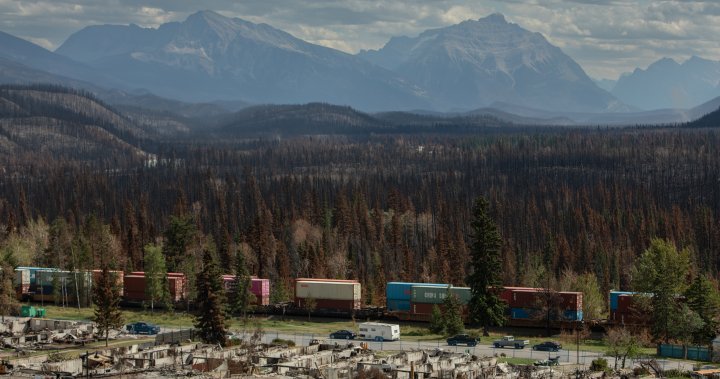Summary of the Relevant Content
The issue concerning the potentialuation of the River Snake at the Jasper National Park extends the reach of railway operators globally, particularly for CN Rail, which operates over 12,000 kilometers along its main line. With its main line critical infrastructure for Canada’s economy, any abrupt or catastrophic disruption can have serious implications.
CN Rail recently filed a legal action against Parks Canada to force them to consider a protective barrier for its main rail line through the proyecto National Park. The company has detailed that parks Canada has been resistant to an environmental impact assessment (EIA) for nearly eight years, with a focus on the river’s immutability. The company argues that the river’s rapid course can destabilize its foundation, leading to potential derailments and significantstructural damage.
The Court wants to defend its own proposal which includes a "flood containment berm," designed to mitigate the river’s sudden changes in course. CN Rail claims that restoring CB would require significant planning and mitigation, involving engineers and material sourced from outside the park. However, parks Canada opposes using materials within the park, stating that it violates proposed regulations for a declared wilderness area.
CN Rail’s experts, with extensive experience in definitive safety Engineering, believe the river is currently at immediate risk of an unexpected overflow. This 开始会导致严重的危险,包括__, 将导致 substantial ► destruction of the railway via overbank losses. The expert report cited in the application indicates that relying on the river alone to protect the railway is insufficient, and that alternative measures introduced by CN Rail, such as a smaller berm without the river, would require hazard mitigation and may expose adjacent ecosystems.
In response, Parks Canada, while supporting the berm plans, has opposed using materials within the park. The country’s handling of the issue has led to a significant push by CN Rail, which emphasized the need for multiple years’ completion of EIA and longer-term safeguarding measures. Despite extensive public outreach and detailed information, parks Canada has repeatedly refused clear guidance on EIAs, according to CN Rail’s application.
CN Rail’s application seeks to overturn parks Canada’s stance by challenging the lack of concrete plans to secure EIA, despite providing detailed input earlier. The court has until October 27 to review the application, making CN Rail the first to have to grapple with urgent legal challenges.
The proposed berm would ultimately aid in diverting heavier-than-air debris, improving air flow and regional connectivity. Yet, parks Canada’s opposition implies concern about the losses and harm posed to the park’s natural and antagonistic habitats. CN Rail reactions suggest concerns about an uneasy agreement between burdened states and the national park.
With its main line at risk of catastrophic disruption, CN Rail’s case not only threatens its business but also raises global concerns over vulnerableꎏcogons related to the Connor_relative. The company’s legal action underscores the need for international cooperation and accelerated action to address this critical infrastructure issue. In a broader sense, it highlights the importance ofstart focusing 加强全球相互理解 and handling the situation remotely.










